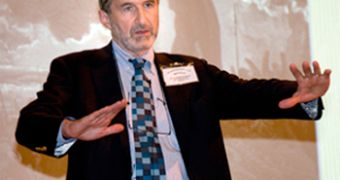What if you had the chance to get insight into physics from one of the greatest minds of the past century, while also accessing modern context and additional content to put everything into perspective?
Bill Gates’ Project Tuva is an invitation extremely hard to refuse, free and full access to the Messenger Lectures presented at Cornell University in 1964 by Richard Feynman, Nobel Laureate and California Institute of Technology (Caltech) professor.
When Project Tuva was launched in 2009, Gates talked personally about the strong impact that Feynman’s lectures had on him, catalyzing a series of efforts spanning 20 years to share them with the world.
Robert Jaffe, Jane and Otto Morningstar Professor of Physics at the Massachusetts Institute of Technology (MIT) is one of the people that worked with Feynman, and which Microsoft tapped to enhance the Messenger Lectures on Project Tuva.
“My objective was to provide a richer experience for the person who goes to the site, in several directions,” Jaffe explains.
“First of all, I wanted to bring the lectures up to date. Physics has moved on over the last 45 years, and several of the things that Feynman thought were puzzles have been resolved.
“Others that Feynman thought might be fairly well understood have turned out to be puzzling. Basically, I wanted to provide a modern context from which to view the lectures.”
As immutable as laws of physics are, a few decades do manage to usher in important changes, and Jaffe’s expert commentary is certainly more than welcomed.
Almost two years after Project Tuva went live, the experience offered to users continues to be addictively immersive, with the initiative’s evolution having introduced enhanced commentaries, interactive demonstrations of scientific concepts and additional multimedia extras.
“1964 was a watershed year in modern fundamental physics, as it turned out,” Jaffe recalls.
“There was an experiment done to show that a symmetry we call CP symmetry was violated, and those results were just available when Feynman was giving the lectures.
“The Cosmic Background Radiation left over from the big bang was first discovered. And the theory of quarks was just being formulated by Dick’s colleagues Gell-Mann and George Zweig at the time.”

 14 DAY TRIAL //
14 DAY TRIAL //